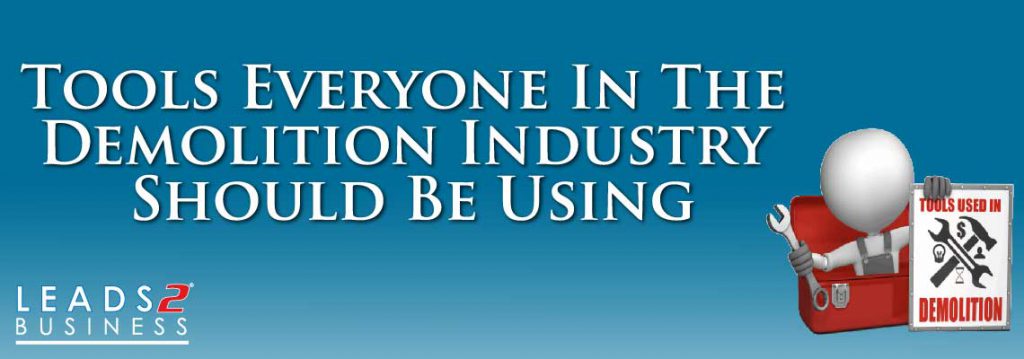Tools everyone in the Demolition Industry Should be using

Originally when I was given this topic, my first thoughts were….hmmm? Demolition, that’s got to be pretty straight forward, right? Blowing a bunch of buildings up or smashing walls down with a sledge hammer in an episode of “Extreme Makeover Home Edition” came to mind but apparently it’s not that simple.
After hours of research and chatting to a couple of experts in the demolition industry there are basic guidelines to follow before any of the dirty work can even begin.
What exactly are we demolishing?
Are there special regulations?
There are different tools to use for different methods of demolition. One would have to assess where the site is situated. Apparently bringing a bulldozer to a graveyard to build the next Mall of Africa would be frowned upon. Yes, it would get the job the done but there are basic regulation guidelines one would have to follow. Remember, Rome wasn’t built in a day, so it won’t be that easy to knock it down either. Depending on what you’re demolishing, you may need to use different tools to finish the job.
Here is a list of tools that everyone in the industry should be using:
1. Safety Equipment
The number one rule in construction is always SAFETY FIRST. Make sure your team is equipped with adequate Health & Safety training as well as all the necessary PPE equipment.
2. Explosives
In the controlled demolition industry, building implosion is the strategic placing of explosive material and timing of its detonation so that a structure collapses on itself in a matter of seconds, minimizing the physical damage to its immediate surroundings. Despite its terminology, building implosion also includes the controlled demolition of other structures, such as bridges, towers, and tunnels.
Building implosion (which reduces to seconds a process which could take months or years to achieve by other methods) typically occurs in urban areas and often involves large landmark structures.

3. Excavators
An excavator is a construction vehicle used to excavate or move large objects. An Excavator is basically made up of 2 parts: A driving base holding a powerful boom arm with an attachment designed for excavating. The operator sits within a small cab connected to the base and controls the arm.
The excavator uses a Hydraulic system to generate a Hydraulic force to control the mechanical arm of the machine. It also uses a chain wheel system for its movement.
There are several types of excavators which are classified on use, brand and purpose.
4. Hand-Held tools
These tools are your “go-to” for more precise work.
If you are just taking fixtures off the walls, or removing adhesive from a floor surface for example, hand held light demolition tools will do.
Bigger tasks like mass tile removal, concrete breaking and knocking down partitions, will require heavy duty power tools in many instances.
Sources:
https://home.howstuffworks.com/5-tools-you-need-for-demolition6.htm
https://en.wikipedia.org/wiki/Building_implosion
If you are interested in becoming one of our subscribers, please visit our website.
To view notes with screenshots on how to use our website, please visit our Wiki site.
To view more articles, please visit our blog.
About Shanna Knezovich
I started my journey with Leads 2 Business in 2013 as an Account Co-Ordinator. I transitioned into an External Sales position as an Account Executive in 2015. I help professionals within the building & construction industry keep up to date with the latest project and tender information as well as source new business opportunities throughout Africa.








Leave a Reply